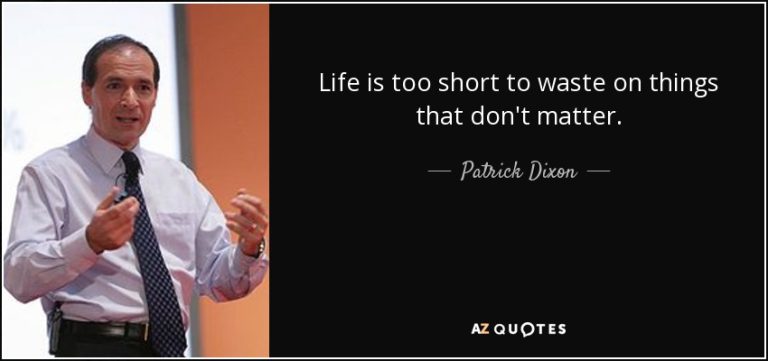Types of Presentation You Need to Know
Presentations come in various forms, each tailored to suit different purposes, audiences, and content. Here are some common types of presentations:
- Informative Presentation: Aimed at providing information or educating the audience on a specific topic. It focuses on delivering facts, data, and explanations in a clear and organized manner.
- Persuasive Presentation: Designed to influence the audience’s beliefs, opinions, or actions. These presentations often include arguments, evidence, and appeals to emotions to convince the audience to adopt a particular viewpoint.
- Demonstrative Presentation: Involves showing the audience how something works or demonstrating a process. Visual aids, props, and step-by-step explanations are commonly used to make the concept or process more understandable.
- Training or Instructional Presentation: Intended to teach specific skills or knowledge to the audience. Common in workshops or training sessions, these presentations focus on practical learning and application.
- Entertainment Presentation: Primarily aims to entertain the audience. This type of presentation could include performances, storytelling, or stand-up comedy, often used in events with a lighter atmosphere.
- Status Report Presentation: Provides updates on ongoing projects, initiatives, or developments within a company or organization. It focuses on sharing progress, challenges, and future plans.
- Sales or Marketing Presentation: Created to promote products, services, or ideas to potential clients or customers. These presentations highlight benefits, features, and value propositions to generate interest.
- Conference or Keynote Presentation: Delivered at conferences or major events, these presentations are often delivered by experts or thought leaders in a particular field. They cover significant trends, insights, or visions.
- Pitch Presentation: Used to pitch a business idea, project, or investment opportunity to potential stakeholders, investors, or partners. The goal is to secure support, funding, or collaboration.
- Educational Presentation: Similar to informative presentations, these are specifically tailored for educational settings such as classrooms or online courses. They focus on facilitating learning and understanding.
- Motivational Presentation: Aimed at inspiring and motivating the audience. These presentations often involve personal stories, anecdotes, and quotes to encourage positive change or mindset shifts.
- Report Presentation: Involves presenting findings, research, or analysis on a specific topic. These presentations are commonly used in academic, scientific, and business settings.
- Review or Retrospective Presentation: Reflects on past events, projects, or activities. It discusses successes, challenges, and lessons learned, often to inform future strategies.
- Product Launch Presentation: Occurs when introducing a new product or service to the market. It highlights the features, benefits, and value proposition of the offering.
- Investor Relations Presentation: Targeted at shareholders, analysts, and potential investors. It provides financial results, performance updates, and future projections of a company.
Each type of presentation requires a tailored approach in terms of content, structure, and delivery to effectively achieve its goals and engage the intended audience.
More Details of the Types of Presentations
The above part shows in short the types of presentations usually used. Now let’s dig deeper into those types with details on why they are used and how to make them effective.
Informative Presentation:
Introduction: Informative presentations are designed to deliver knowledge and information to the audience in a clear and organized manner.
Why:
- Clearly define the topic or subject of the presentation.
- Provide relevant context to set the stage for the information being presented.
How:
- Present facts, data, and statistics to support your points.
- Use visual aids such as charts, graphs, and images to enhance understanding.
- Organize information logically, using headings, subheadings, and bullet points.
- Summarize key takeaways at the end to reinforce the main points.
Persuasive Presentation:
Introduction: Persuasive presentations aim to sway the audience’s opinions, beliefs, or actions through compelling arguments and emotional appeals.
Why:
- Clearly state the specific viewpoint or position you want the audience to adopt.
- Identify the primary reasons and evidence that support your perspective.
How:
- Craft a strong opening that grabs the audience’s attention and introduces the topic.
- Use stories, anecdotes, or real-life examples to make your points relatable.
- Address potential counterarguments and offer rebuttals to strengthen your position.
- Utilize emotional appeals, such as personal stories or evocative language, to connect with the audience’s emotions.
- Conclude with a call to action that reinforces your main message and encourages the audience to take a specific step.
Demonstrative Presentation:
Introduction: Demonstrative presentations focus on showing the audience how something works or how a process is carried out.
Why:
- Clearly state the purpose of the demonstration and what the audience will learn.
- Prepare any necessary props, visuals, or equipment for the demonstration.
How:
- Break down the process into clear steps, explaining each step in detail.
- Use visual aids, diagrams, or physical props to enhance understanding.
- Maintain a logical sequence and provide verbal explanations alongside the demonstration.
- Encourage audience interaction and questions to ensure comprehension.
- Summarize the key points and benefits of the demonstrated process at the end.
Training or Instructional Presentation:
Introduction: Training presentations are designed to teach specific skills, knowledge, or procedures to the audience.
Why:
- Identify the learning objectives and outcomes of the training session.
- Determine the level of expertise and prior knowledge of the audience.
How:
- Break down complex concepts into manageable segments, starting with foundational information.
- Incorporate interactive activities, exercises, or quizzes to reinforce learning.
- Provide practical examples and real-world applications to enhance understanding.
- Encourage questions and discussions to clarify any uncertainties.
- Summarize the key takeaways and provide additional resources for further learning.
Entertainment Presentation:
Introduction: Entertainment presentations are designed to engage and amuse the audience, often involving elements of humor, storytelling, or creative performance.
Why Such Presentation: Entertainment presentations are suitable for events where a lighter atmosphere is desired, such as company parties, social gatherings, or motivational sessions.
How to Make the Presentation:
- Begin with a captivating hook or anecdote to grab the audience’s attention.
- Incorporate humor, jokes, or amusing anecdotes to keep the audience engaged.
- Use storytelling techniques to weave a compelling narrative throughout the presentation.
- Consider interactive elements or audience participation to create a dynamic experience.
- Conclude with a memorable and uplifting message that resonates with the audience.
Status Report Presentation:
Introduction: Status report presentations provide updates on ongoing projects, initiatives, or developments within an organization, offering stakeholders insight into progress and challenges.
Why Such Presentation: These presentations are crucial for transparency and alignment, ensuring that all stakeholders are informed about the current state of affairs.
How to Make the Presentation:
- Begin with a concise overview of the project’s objectives and its significance.
- Highlight key accomplishments, milestones, and progress achieved since the last update.
- Address any challenges or setbacks encountered, and provide insights into how they’re being managed.
- Share upcoming goals, plans, and strategies for the next phase.
- Conclude with a clear call to action or specific requests for support or feedback.
Sales or Marketing Presentation:
Introduction: Sales or marketing presentations focus on promoting products, services, or ideas to potential clients or customers, emphasizing their value and benefits.
Why Such Presentation: These presentations are crucial for attracting new customers, generating leads, and driving business growth.
How to Make the Presentation:
- Begin by clearly identifying the problem or need your product/service addresses.
- Highlight the unique features, benefits, and value proposition of what you’re offering.
- Incorporate testimonials, case studies, or success stories to build credibility.
- Use visuals and multimedia to showcase the product/service in action.
- Close with a strong call to action, guiding the audience on how to take the next steps.
Conference or Keynote Presentation:
Introduction: Conference or keynote presentations are delivered by experts or thought leaders at major events, sharing insights, trends, and visions that influence their field.
Why Such Presentation: These presentations inspire and inform the audience, providing fresh perspectives and guiding discussions on critical topics.
How to Make the Presentation:
- Begin by establishing your credibility and expertise in the subject matter.
- Introduce the overarching theme or idea you’ll be discussing.
- Provide well-researched insights, supported by data, examples, and relevant anecdotes.
- Engage the audience with thought-provoking questions or interactive segments.
- Conclude with a memorable and impactful call to action, encouraging the audience to reflect or take steps forward.
Educational Presentation:
Introduction: Educational presentations are designed to facilitate learning and understanding on a specific topic, often in academic or professional settings.
Why Such Presentation: These presentations aim to disseminate knowledge, share insights, and enhance the audience’s understanding of complex subjects.
How to Make the Presentation:
- Begin with a clear overview of the learning objectives and what the audience will gain.
- Organize content logically, breaking down complex concepts into manageable sections.
- Use visuals, diagrams, and examples to clarify concepts and engage visual learners.
- Encourage active participation through Q&A sessions or group discussions.
- Summarize key takeaways and reinforce the relevance of the information presented.
Motivational Presentation:
Introduction: Motivational presentations inspire and uplift the audience, often featuring personal stories, anecdotes, and messages of positive change.
Why Such Presentation: These presentations encourage individuals to adopt a more positive mindset, overcome challenges, and pursue personal or professional growth.
How to Make the Presentation:
- Start with a relatable story or situation that captures the audience’s attention.
- Share personal experiences of triumph over adversity, highlighting key lessons learned.
- Use powerful quotes, metaphors, or visual imagery to reinforce motivational messages.
- Engage the audience emotionally, evoking feelings of hope and empowerment.
- Conclude with a strong call to action, encouraging the audience to embrace change and take inspired steps.
Review or Retrospective Presentation:
Introduction: Review presentations reflect on past events, projects, or activities, focusing on successes, challenges, and lessons learned.
Why Such Presentation: These presentations provide valuable insights for improvement, highlight achievements, and inform future strategies.
How to Make the Presentation:
- Begin with a brief overview of the purpose and significance of the retrospective.
- Summarize the goals, objectives, and outcomes of the project or initiative being reviewed.
- Analyze both successful outcomes and areas where improvements could be made.
- Share specific lessons learned and actionable takeaways for future projects.
- Conclude with reflections on how the lessons from the past can be applied to future endeavors.
Product Launch Presentation:
Introduction: Product launch presentations introduce new products or services to the market, focusing on their features, benefits, and value.
Why Such Presentation: These presentations generate excitement, educate potential customers, and drive initial interest and adoption.
How to Make the Presentation:
- Begin by creating anticipation and curiosity around the new product or service.
- Highlight the specific problem or need that the product addresses.
- Showcase key features, unique selling points, and advantages over existing options.
- Provide demonstrations, visuals, or examples to illustrate the product’s capabilities.
- Conclude with a clear call to action, guiding the audience on how to explore or purchase the offering.
Investor Relations Presentation:
Introduction: Investor relations presentations provide financial results, performance updates, and future projections to shareholders, analysts, and potential investors.
Why Such Presentation: These presentations ensure transparency, build investor confidence, and inform stakeholders about the company’s financial health.
How to Make the Presentation:
- Begin with a brief overview of the company’s mission, values, and recent accomplishments.
- Share financial highlights, including revenue, earnings, and key performance indicators.
- Discuss the company’s growth strategies, upcoming initiatives, and market trends.
- Provide context for any fluctuations or changes in financial metrics.
- Conclude with a clear outlook and long-term vision for the company.
Other Types of Presentations:
Beyond the mentioned types, there are various specialized presentation formats such as pitch presentations, fundraising presentations, research presentations, and more. Each type serves a specific purpose and requires tailored content and delivery.
For each presentation type, remember to adapt your approach based on the audience, context, and goals. Engaging visuals, clear organization, and effective communication techniques are key to delivering impactful presentations that resonate with your audience




